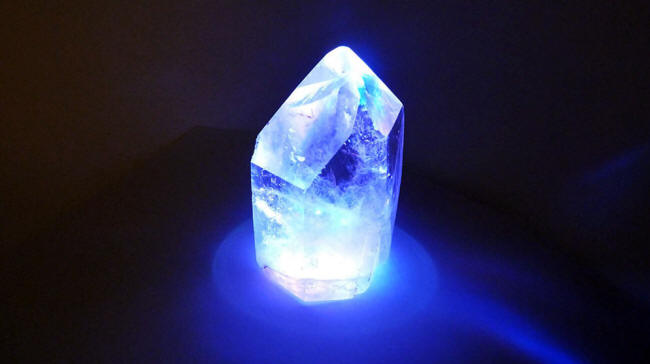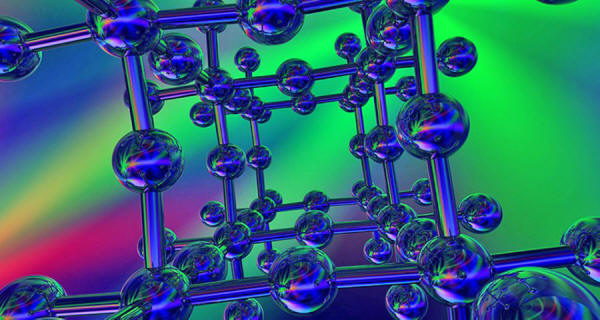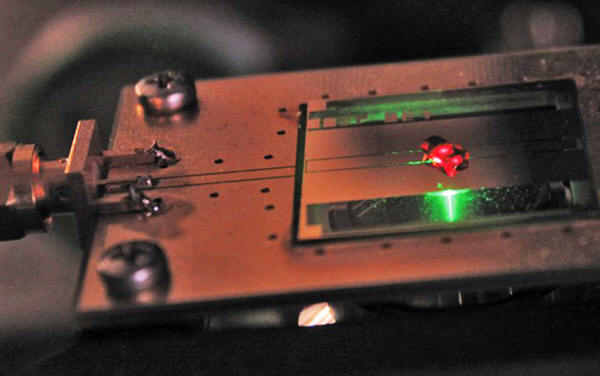|
from Medium Website
than mathematical anomalies up until just a short while ago. Image by moviemax.
They were supposed to be impossible...
The name "time crystals" conjures up fantastical images of traversing magic portals to go backward or forward in time.
They sound alien; something which could not possibly exist on our planet but instead are a technology harbored by a more advanced civilization. The crystals might grow white and shrouded in an otherworldly glow of blues and reds or some opalescent mixture of hues that radiates around them.
In short, beautiful but ultimately mythical... Except time crystals aren't a myth.
And while they're not capable of
such feats as controlling time or traveling through dimensions, they
are the first of their kind and are a fascinating addition to our
understanding
of physics.
Really they're a number of bonded atoms which repeat in a specific pattern, creating a crystal lattice that exists in 3 dimensions.
This crystal structure breaks what is known as the symmetry of space. Symmetry of space is the ability to sample any part of the space to find the same composition, like sampling a tank full of water and knowing that the water near the top will be the same as the water near the bottom.
But crystals make the space periodic as their patterns repeat in specific directions, no longer allowing for homogeneity.
Time crystals do this same thing
but repeat in 4 dimensions.
This is important because one of the biggest aspects of physics is using symmetries to find natural laws.
In our example of space symmetry and normal crystals, this leads to the law of conservation of momentum. In the case of time crystals, time symmetry leads to the conservation of energy.
To understand the symmetry of time, imagine rolling a die.
Your chances of getting a 5 are about 17% whether you roll the die today or tomorrow. But broken time symmetry would be a change in your chances of rolling a 5 the longer you wait.
Because of this connection between symmetries and laws, this means that time crystals don't obey the law of conservation of energy which states that energy cannot be created or destroyed. It's the first time we've ever witnessed this law broken.
Energy within the time
crystal continues to repeat even in its lowest energy state, making
it impossible for the structure to return to equilibrium.
But because time crystals move at their ground state - the lowest energy state - this is like a die that rolls even when no one is touching it.
Suddenly, we have the first non-equilibrium matter ever.
shows perfectly spaced atoms in a normal crystal. Breaking space symmetry means atoms are found only at specific locations, with emptiness in between.
Image
by Shilova Ekaterina
It wasn't until 2016 that
the first blueprint for how to make these a possibility really
surfaced.
The team defined the kind of circumstances under which a time crystal could occur - a quantum system without thermal equilibrium and one which can't be described by any temperature since temperatures naturally suggest equilibrium.
Non-equilibrium
Floquet
systems can contain states of matter not possible otherwise. A
separate team led by Norman Yao then showed scientists how to make
them.
But time crystals won't respond the way you expect.
Instead of following the pattern of pulsations from the laser, the ions will pulse at a multiple of the original speed. This is like saying that if I pulse a laser at the ions every 5 seconds, they instead respond after 20 seconds or 35 seconds, instead of the original 5.
The oscillations are then sustained internally.
which has formed in the red network of electron spins. It was made using nitrogen impurities by researchers at Harvard.
Image
by Georg Kucsko
First by researchers at the University of Maryland who used ytterbium atoms and entangled them in repeating patterns using a magnetic field. A second laser then moved the atoms and they eventually exhibited a pattern different from the one created by the laser.
Researchers at Harvard used molecules from nitrogen impurities in diamonds and employed microwaves to cause the ions to flip and oscillate.
Since then, time crystals have been made twice more:
Since their discovery, time crystals have been likened to a perpetual-motion machine - a machine that can continue to move and function without an energy source...
But while they come close to the description, time crystals are different in that no energy can be extracted from them because they are already in their ground state.
However, time crystals do seem to have a promising future. Because of their stable spin-flip cycles, time crystals could be the answer to building better memory in quantum computers.
As they are now, quantum computers are easily disturbed (even by things as small as dust and sound) and these disruptions can cause loss of information. The time crystal's entangled atoms could then store qubits of information in a much more reliable way.
They could also help
bring together quantum mechanics and general relativity, or perhaps
be the first step to unifying space and time since quantum mechanics
treats these two very differently.
So then again, maybe they
do...
|




